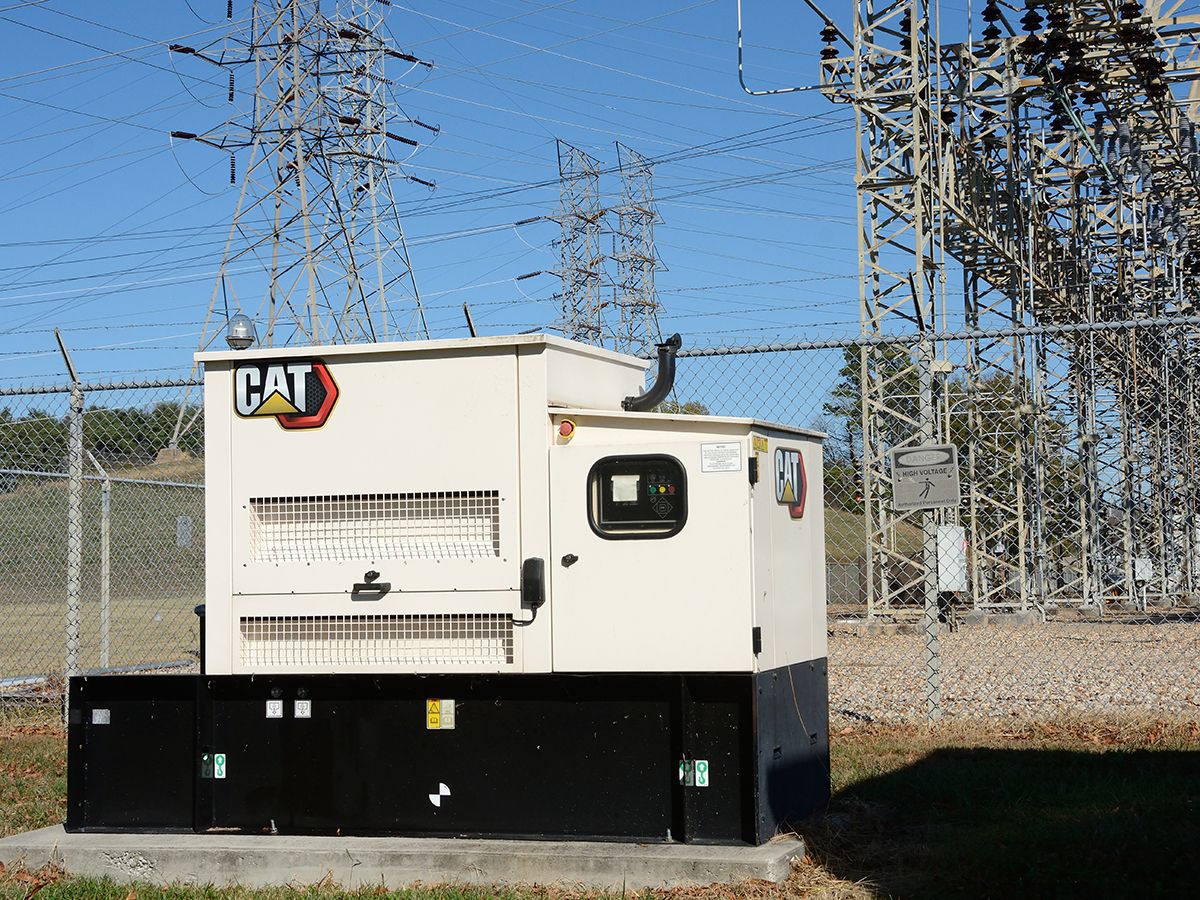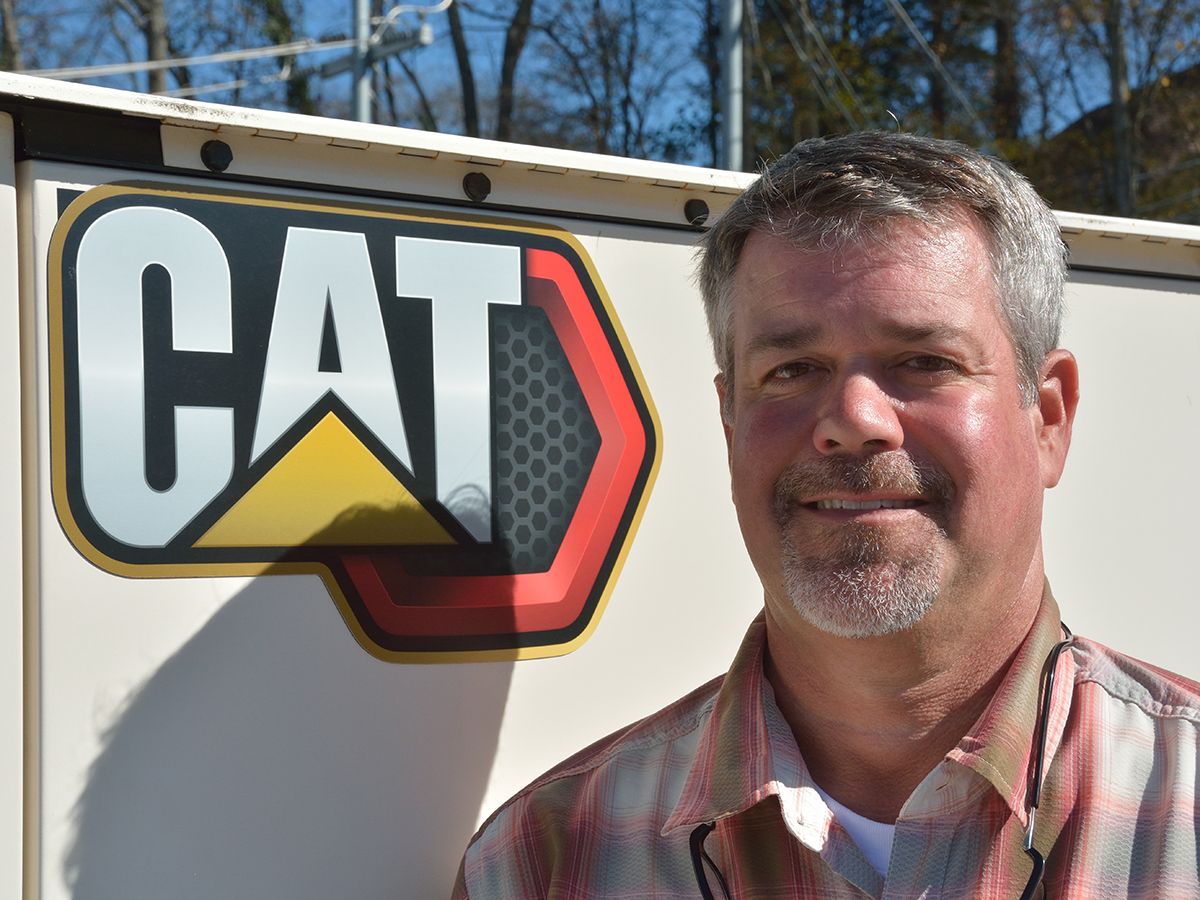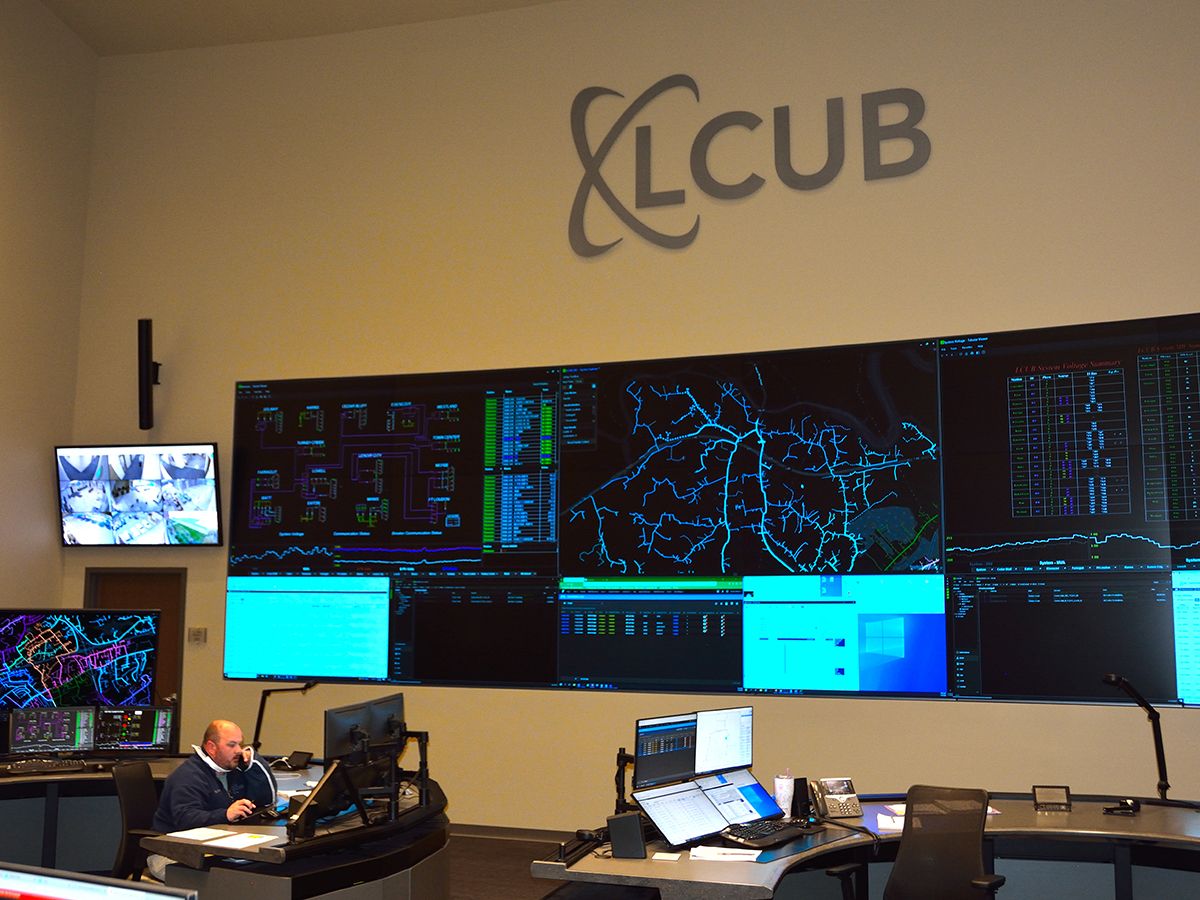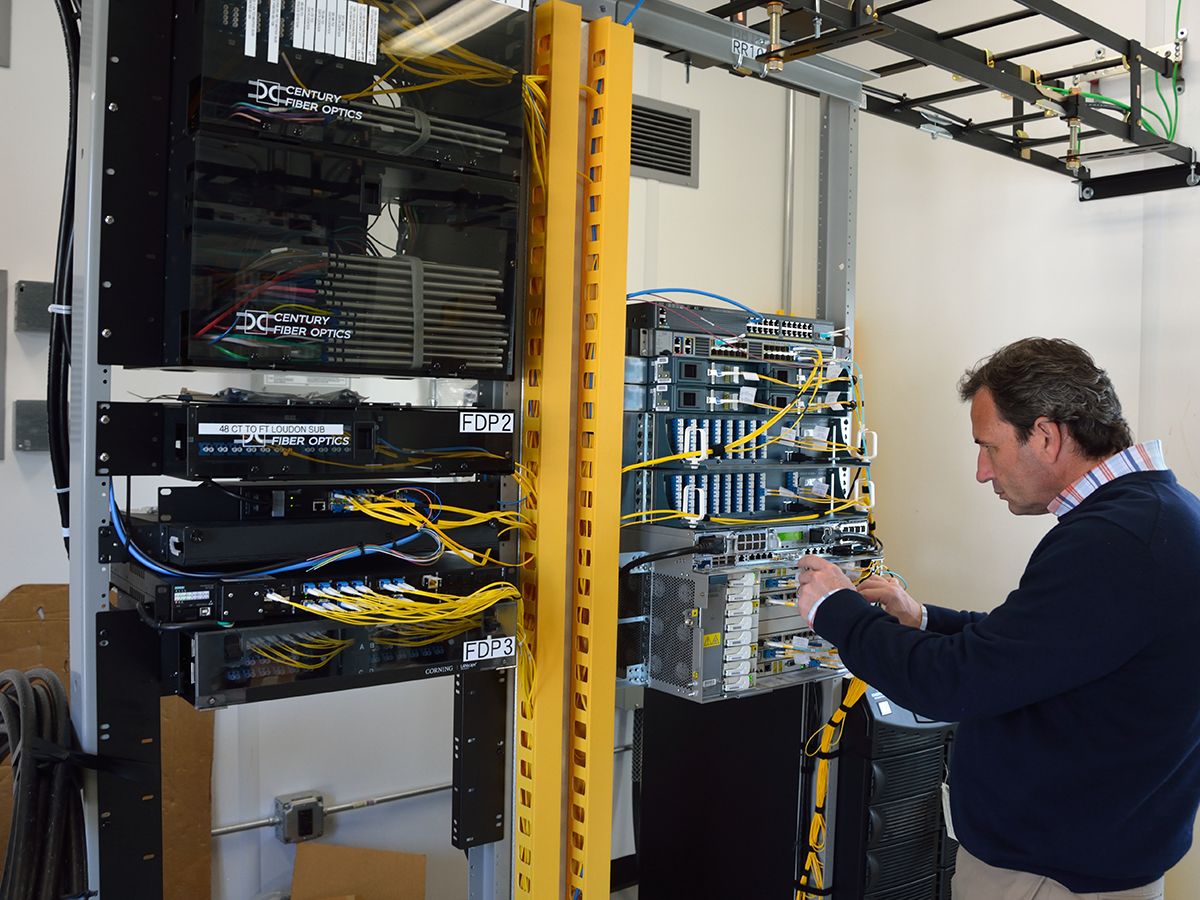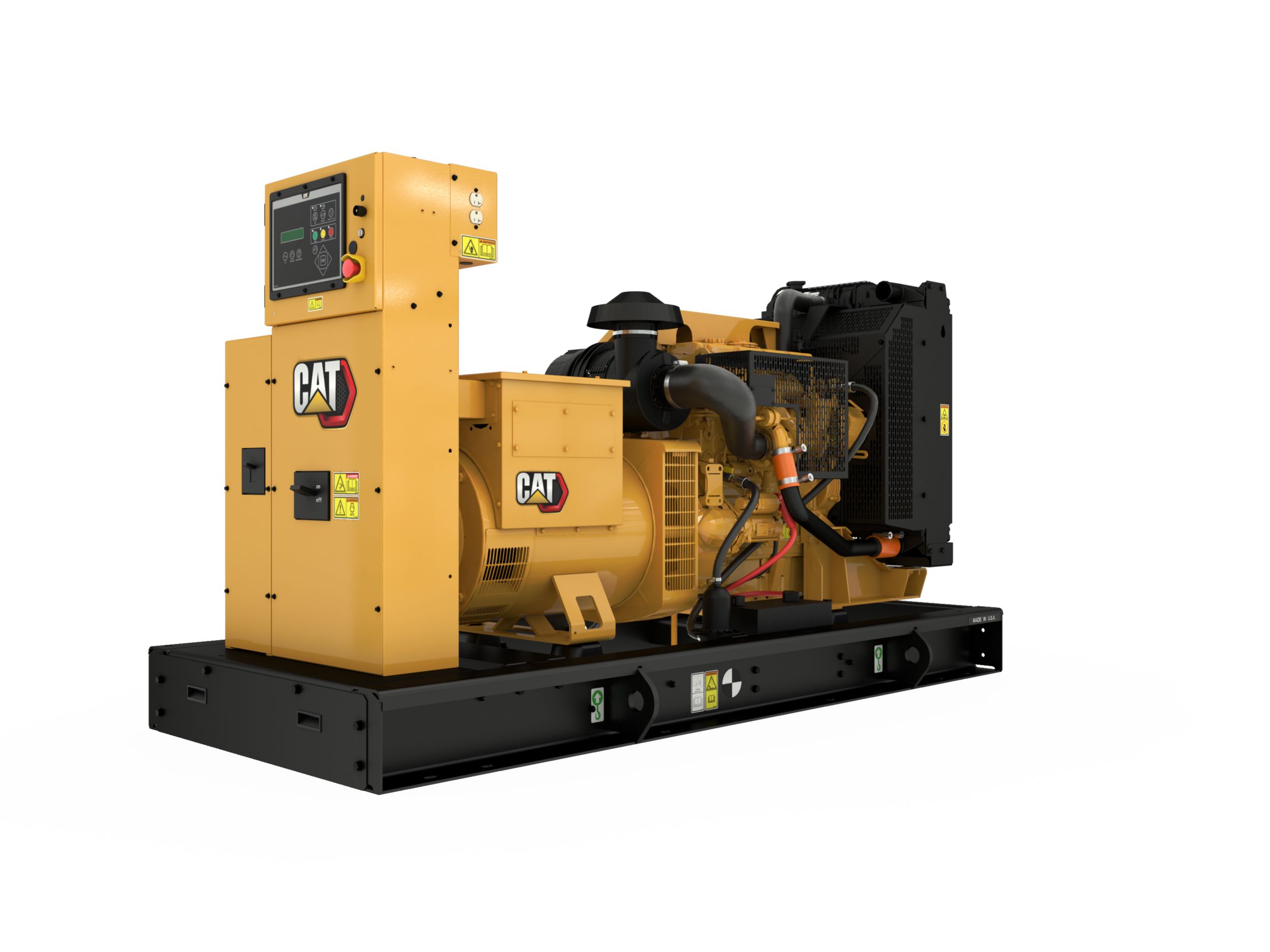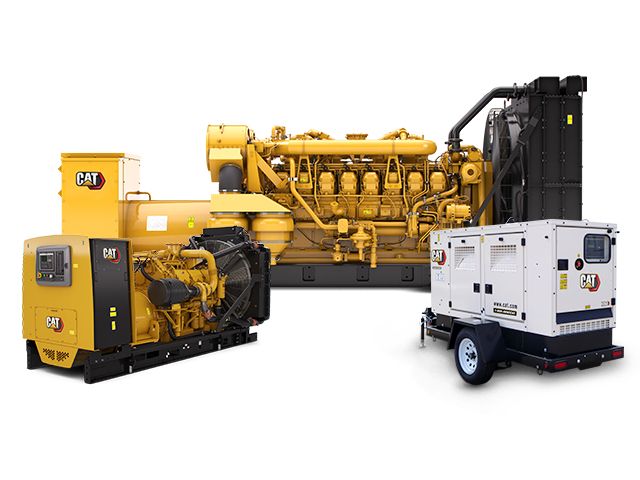POWER NEED
Tucked away in the pastoral east Tennessee River valley, a once-rural electric company is widely recognized today as one of the region’s leading multi-service utility providers with a well-earned reputation for going the extra mile.
Lenoir City Utilities Board (LCUB) was formed in 1938, when Lenoir City signed a contract with the fledgling Tennessee Valley Authority (TVA) to deliver TVA-supplied electricity to its residents and businesses. The tiny electric department only had four employees and 317 customers. By the mid-1940s, LCUB’s services expanded to include water and sewer under the authority of a newly created Water and Light Commission with citizen oversight.
It was during this period that LCUB clearly demonstrated its commitment to support the broader region, working diligently to build a power distribution network for the neighboring West Knox County community. By 1945, LCUB had expanded its service area well into West Knox County and Solway near the Anderson County border. LCUB also invested heavily to improve the water system and build an additional reservoir, and shortly thereafter added a natural gas distribution system to its utility services.
Today, it serves 65,430 electric customers in a four-county service region, plus 9,005 water customers, 6,277 natural gas customers, and 5,362 wastewater customers, making LCUB the eighth largest utility among 154 TVA distributors.
Through the years, LCUB has focused on providing the highest quality services, using the most advanced technologies to meet the needs of its growing customer base at the lowest possible rates.
LCUB is deploying state-of-the-art technology in a variety of ways. An automated metering system for all utility services has been instituted that streamlines billing, ensures accuracy, and provides proactive notification of any problems to its customers. Advances in this system enable customers to manage their utilization, thereby reducing their bills.
LCUB’s newly installed Supervisory Control and Data Acquisition (SCADA) system and Order Management System (OMS) system help engineers identify problems and provide quicker response times when outages and other problems occur.
LCUB is also installing the latest technology in substation relaying/automation and field reclosers. The installation of these technologies, along with LCUB’s newly installed 82-mile fiber ring, will enable the utility to start toward the operation of a self-healing grid. This will automatically restore sections of the power grid and pinpoint the location and cause of an interruption.
SOLUTION
With 16 separate substations, Lenoir City Utilities has installed Cat diesel generators to provide backup power in the event of an outage, says Lee Hartline, director of information technology for LCUB. Ranging in size from 35 to 60 kW, the Caterpillar generators are located at substations where the fiberoptic nodes are housed.
“Upon sensing there’s no utility power, the Cat generators will automatically start,” Hartline says.
The Cat generator sets are housed in outdoor enclosures, and are equipped with Cat Connect, a remote asset monitoring technology that checks the status of the gensets. It enables staff at LCUB’s operations center to receive:
- Continuous data on engine and electrical parameters
- Real-time alerts and alarms
- Engine or generator faults that signal a potential shutdown or failure to start
“The largest advantage is the capability for customers to have eyes on their remote assets,” says Andy Downs, a sales representative with Cat dealer Stowers Machinery. “LCUB has multiple substations that are unmanned and not close to their central office. Cat Connect helps them keep eyes on those locations and lets them know the status of their gensets.”
Cat Connect can monitor an essentially unlimited number of gensets at remote sites and display them all in a single dashboard view. It can synthesize data across multiple sites and geographic areas and help users compare the performance of sites and individual assets.
Matty Hagy, a product support and service representative with Stowers, worked with LCUB engineers after the initial installation and provided instructions on using the remote monitoring system.
“From our operations center, or from any location, we can monitor it by simply logging in and using a web interface,” Hartline says. “And it gives us the real-time status for all of our equipment. We can monitor fuel levels, battery voltage, alarms, notifications—everything pertinent to keeping our equipment run-ready.”
If there is an operating issue with one of the gensets, LCUB staff receives a text message and an email notifying them of the problem.
“It will tell them if it has low battery voltage, for example,” Downs says. “It’s real-time data. So, they would know if a generator didn’t start so they can dispatch their crews or call one of our technicians for help.
“And it also gives our technicians insight into what the problem could be,” Downs says. “So this has the effect of reducing trips to the generator location, which in turn will save the customer money and return the equipment to operation a lot sooner.”
One of the ancillary benefits of Cat Connect is lessening the amount of manpower required to service generator sets, adds Brandon Lynn, a senior digital product manager for Caterpillar Electric Power.
“During the peak of the COVID-19 pandemic, it was really important for folks to stay out of their facilities,” Lynn says. “What it comes down to is, how can I still do my job but maybe I don’t need to be onsite. If we can use technology to be more efficient, then we don’t need as many people to be physically present, and we can better address customer needs.”
RESULTS
Hartline cites a case where one of LCUB’s substations experienced an outage during a storm. Power was not restored at the substation because it was not affecting anything else on the local grid. The Cat generator started automatically and ran as it was meant to, but eventually it ran low on fuel. At that point, a notification was sent that the generator was running low on diesel fuel and a fuel truck was dispatched.
Cat Connect can also help in staying on top of scheduled maintenance.
“You can use it as part of the regular maintenance schedule,” Downs says. “If you already know it’s going to need a battery, you can have that on the truck with you. It just gives customers a better opportunity to stay on top of equipment maintenance.”
Another key facet of Cat Connect is monitoring the overall condition of the generator set. It can detect a small problem before it becomes a larger, more costly problem.
“You could have a coolant heater that starts to fail,” Downs says. “One of the main advantages of Cat Connect is identifying a problem and making a repair before failure, before something more serious happens.
“You can catch a potential problem before it fails at 2 a.m. in the morning when customers aren’t ready to handle it. This way, we can proactively keep the equipment in tip-top shape.”
Download the Power Profile




